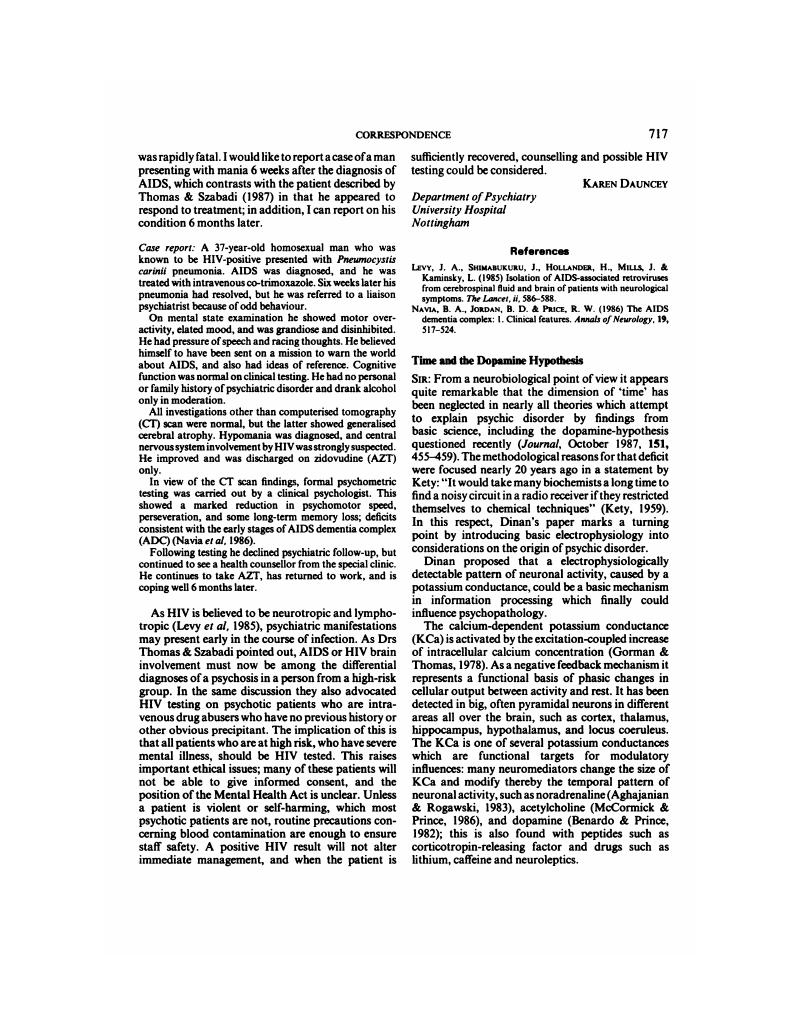No CrossRef data available.
Article contents
Time and the Dopamine Hypothesis
Published online by Cambridge University Press: 02 January 2018
Abstract
An abstract is not available for this content so a preview has been provided. As you have access to this content, a full PDF is available via the ‘Save PDF’ action button.

- Type
- Correspondence
- Information
- Copyright
- Copyright © Royal College of Psychiatrists, 1988
References
Aghajanian, G. K. & Rogawski, M. A. (1983) The physiological role of alpha-adrenoceptors in the CNS: new concepts from single-cell studies. TIPS, 315–317.Google Scholar
Benardo, L. S. & Prince, D. A. (1982) Dopamine action on hippocampal pyramidal cells. Journal of Neuroscience, 2, 415–423.CrossRefGoogle ScholarPubMed
Gorman, A. L. F. & Thomas, M. V. (1978) Changes in the intracellular concentration of free calcium ions in a pace-maker neurone, measured with the metallochromic indicator dye arsenazo III. Journal of Physiology, 275, 357–376.CrossRefGoogle Scholar
Kety, S. S. (1959) Biochemical theories of schizophrenia. Part II. Science. 129, 1590–1596.CrossRefGoogle Scholar
McCormick, D. A. & Prince, D. A. (1986) Acetylcholine induces burst firing in thalamic reticular neurones by activating a potassium conductance. Nature, 319, 402–405.CrossRefGoogle ScholarPubMed



eLetters
No eLetters have been published for this article.